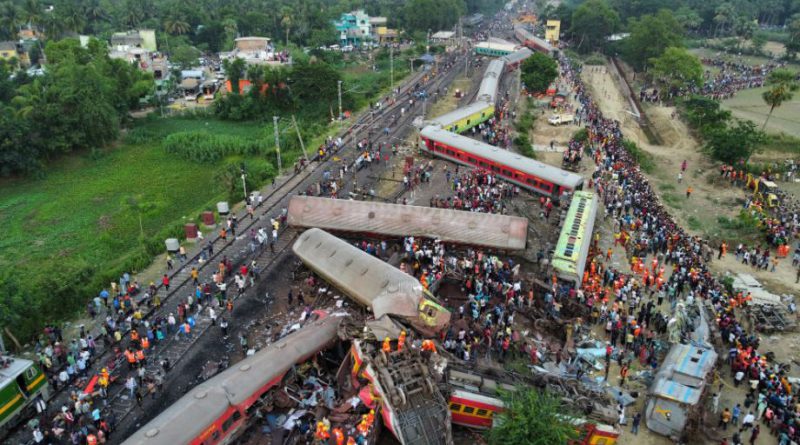India ends rescue work as focus turns to cause of worst crash in decades
Bahanaga (Reuters) – Indian authorities on Sunday completed rescue operations after the country’s deadliest rail crash in more than two decades, with signal failure emerging as the likely cause of an accident that killed at least 275 people.
The death toll from Friday’s crash was revised down from 288 after it was found that some bodies had been counted twice, said Pradeep Jena, chief secretary of the eastern state of Odisha.
The tally was unlikely to rise, he told reporters. “Now the rescue operation is complete.”
Nearly 1,200 people were injured when a passenger train hit a stationary freight train, jumped the tracks and hit another passenger train passing in the opposite direction near the district of Balasore.
More than 900 people had been discharged from hospital while 260 were still being treated, with one patient in critical condition, the Odisha state government said in an update on Sunday evening.
State-run Indian Railways, which says it transports more than 13 million people every day, has been working to improve its patchy safety record, blamed on ageing infrastructure.
Prime Minister Narendra Modi, who faces an election due next year, visited the scene on Saturday to talk to rescue workers, inspect the wreckage and meet some of the injured.
“Those found guilty will be punished stringently,” Modi said.
Preliminary Investigation
A preliminary investigation indicated the Coromandel Express, heading to Chennai from Kolkata, moved out of the main track and entered a loop track – a side track used to park trains – at 128 kph (80 mph), crashing into the freight train parked on the loop track, said Railway Board member Jaya Varma Sinha.
That crash caused the engine and first four or five coaches of the Coromandel Express to jump the tracks, topple and hit the last two coaches of the Yeshwantpur-Howrah train heading in the opposite direction at 126 kph on the second main track, she told reporters.
This caused those two coaches to jump the tracks and result in the massive pileup, Sinha said.
The drivers of both passenger trains were injured but survived, she said.
The probe is now focused on the computer-controlled track management system, called the “interlocking system”, which directs a train to an empty track at the point where two tracks meet.
The system is suspected to have malfunctioned and should not have allowed the Coromandel Express to take the loop track, Sinha said.
Restoration
Workers with heavy machinery were clearing the damaged track, wrecked trains and electric cables, as distraught relatives looked on.
More than 1,000 people were involved in the rescue, the Railway Ministry said on Twitter.
“The target is by Wednesday morning the entire restoration work is complete and tracks should be working,” Railway Minister Ashwini Vaishnaw said.
At a business centre where bodies were being taken for identification, dozens of relatives waited, many weeping and clutching identification cards and pictures of missing loved ones.
Kanchan Choudhury, 49, was searching for her husband. Five people from her village were on the train, four of them being treated for injuries. Her husband was found dead, she said, weeping as she waited to claim compensation, carrying her and her husband’s identity cards.
Families of the dead will get 1 million rupees ($12,000) in compensation, while the seriously injured will get 200,000 rupees, with 50,000 rupees for minor injuries, Vaishnaw said on Saturday.
Pope Francis, U.S. President Joe Biden, Canadian Prime Minister Justin Trudeau, British Prime Minister Rishi Sunak and French President Emmanuel Macron have expressed condolences



